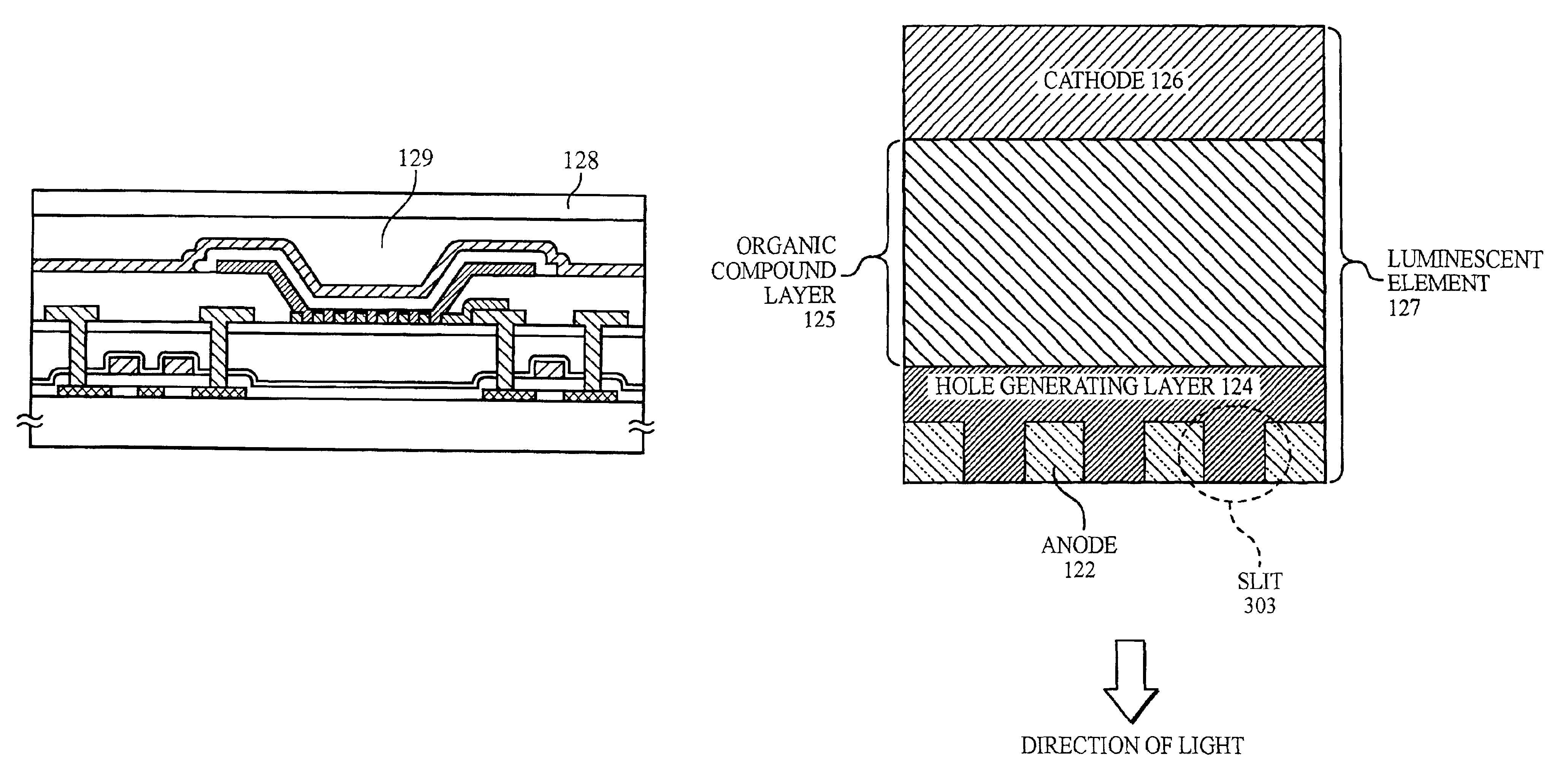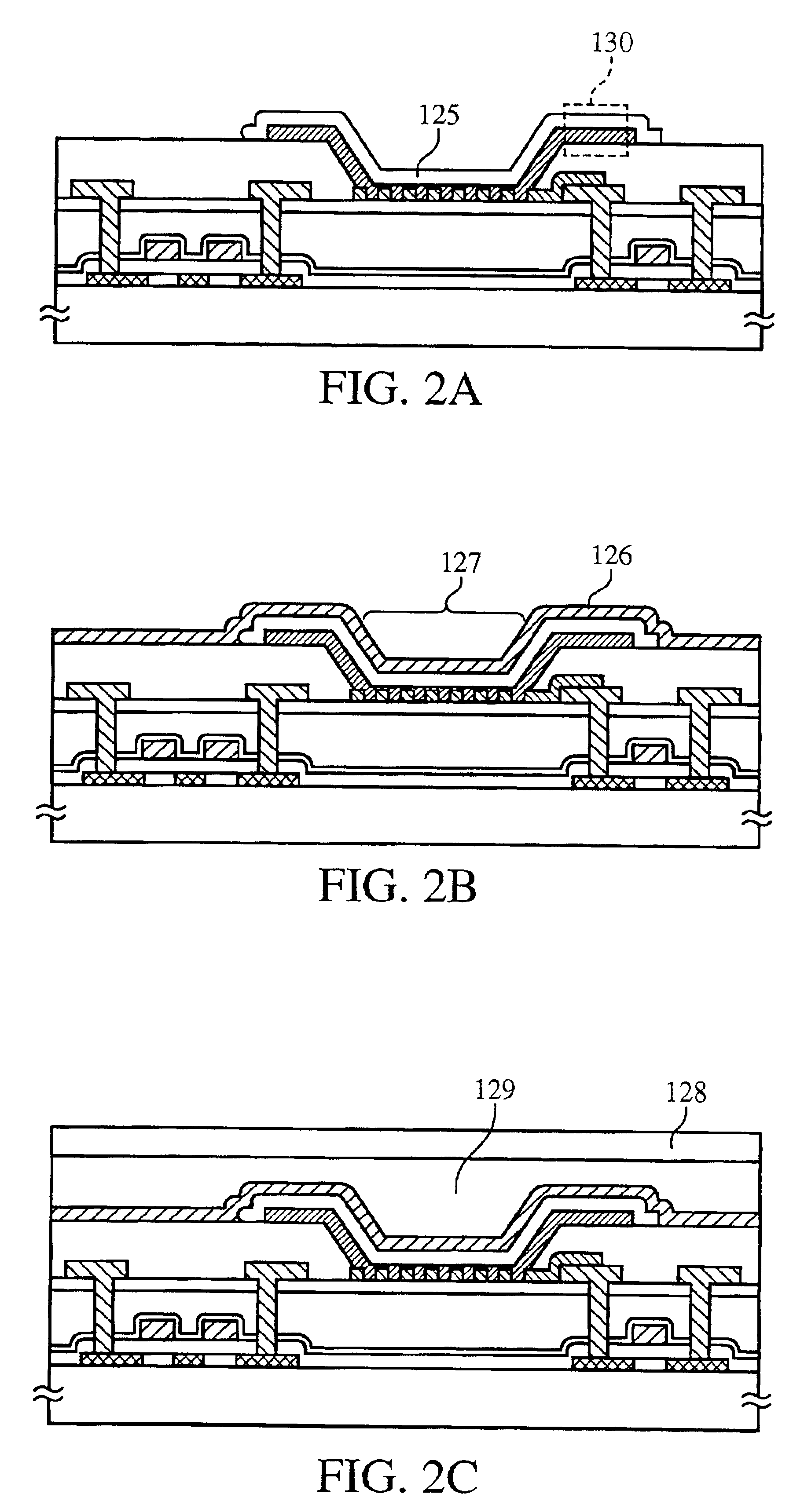Luminescent device and process of manufacturing the same
a technology of luminescent devices and manufacturing processes, applied in the field of luminescent devices, can solve the problem of insufficient luminescence and achieve the effect of reducing resistan
- Summary
- Abstract
- Description
- Claims
- Application Information
AI Technical Summary
Benefits of technology
Problems solved by technology
Method used
Image
Examples
example 1
[0062]Referring to FIG. 5, an element structure of a luminescent element which the luminescent device of the present invention has will be described in the present example.
[0063]In FIG. 5, reference number 501 represents an anode having slits 502. The anode 501 can be made of a metal film such as a platinum (Pt), chromium (Cr), tungsten (W) or nickel (Ni) film. In the present example, the thickness of the anode 501 is set to 30 nm.
[0064]Next, a hole generating layer 505 is formed by co-evaporating an electron receptor 503 and a low molecule material 504. In the present example, as the electron receptor, the same material as described in the above-mentioned embodiments can be used. However, as the low molecule material 504, a hole-injecting material is used.
[0065]As the hole-injecting material, a phthalocyanine material can be used, examples of which include copper phthalocyanine (CuPc) and non-metal phthalocyanine (H2PC).
[0066]In the present example, a hole generating layer 505 made...
example 2
[0078]Referring to FIG. 6, a case in which mixture layers are formed in the luminescent element described in Example 1 will be described in the present example.
[0079]In FIG. 6, reference number 601 represents an anode having slits 602, and reference number 605 represents a hole generating layer formed by co-evaporating an electron receptor and a low molecule material.
[0080]A hole injection layer 607, a hole transport layer 608, a luminescent layer 609, and an electron transport layer 610 are successively deposited on the hole generating layer, whereby an organic compound layer 606 can be formed. For the formation thereof, it is advisable to refer to Example 1.
[0081]In the present example, mixture layers are formed between the luminescent layer 609 and the hole transport layer 608 contacting the luminescent layer 609, and between the luminescent layer 609 and the electron transport layer 610 contacting the luminescent layer 609.
[0082]In the present example, the mixture layer formed b...
example 3
[0086]In the present example, a luminescence device wherein luminescent elements which emit red, green and blue light rays are formed will be described. In the present example, the hole generating layer 124 is formed as illustrated in FIG. 1E, and subsequently different materials are used in luminescent layers to form an organic compound layer emitting different color light rays. Since co-evaporation is used as all methods of forming the luminescence layers, the luminescent layers can be made from the materials different for respective pixels, using metal masks when the layers are formed.
[0087]In the present example, a metal mask is used to form luminescent layers emitting red light rays (hereinafter referred to as red color luminescent layers). As the material used to form the red color luminescent layers in the present example, a known material may be used. All of the red color luminescent layers formed in the luminescent device may be formed at the same time, or may be successive...
PUM
 Login to View More
Login to View More Abstract
Description
Claims
Application Information
 Login to View More
Login to View More - R&D
- Intellectual Property
- Life Sciences
- Materials
- Tech Scout
- Unparalleled Data Quality
- Higher Quality Content
- 60% Fewer Hallucinations
Browse by: Latest US Patents, China's latest patents, Technical Efficacy Thesaurus, Application Domain, Technology Topic, Popular Technical Reports.
© 2025 PatSnap. All rights reserved.Legal|Privacy policy|Modern Slavery Act Transparency Statement|Sitemap|About US| Contact US: help@patsnap.com



